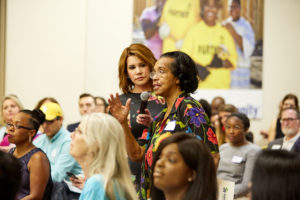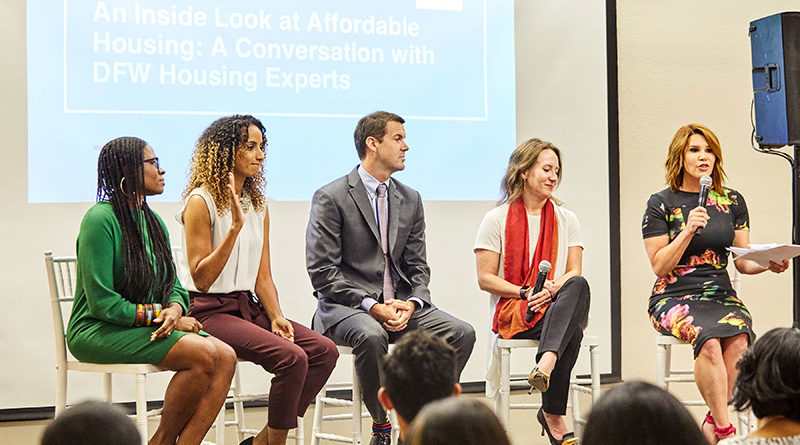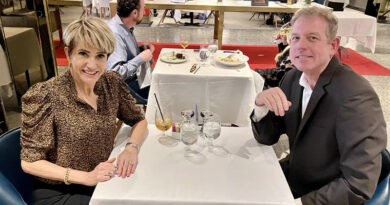Housing Prices Pose ‘Unacceptable’ Burden
One in six Dallas residents – whether renting or owning –- are paying more than half of their monthly income on housing.
(ABOVE: Affordable housing was discussed at a Dallas panel in June. Courtesy Dallas Habitat for Humanity)
“That’s unacceptable,” said Dallas Habitat for Humanity’s Tosha Herron-Bruff.
When so much money goes toward putting a roof over their heads, other essentials like groceries, medicine, and transportation are sacrificed, she explained.
Herron-Bruffand and other affordability advocates participated in a panel discussion this summer and addressed what they saw as unsettling numbers for the local housing market.
Dallas has only a 41 percent homeowner rate – the lowest of all major Texas cities – plus a more than 50 percent rental rate, indicating resident’s inability to purchase a home.
“Right now, in Dallas, you see construction everywhere, but they all seem to be for fancy high-rises and expensive buildings.” -Tosha Herron-Bruff

There also is a shortage of approximately 20,000 housing units that would only bring Dallas back to the minimum level of providing homes.
The Affordable Housing Panel on June 27 also included representatives from the city of Dallas, MetroTex Association of Realtors, and Dallas Housing Authority.
“We definitely had all the right people together to have a good discussion,” Herron-Bruff said. “I don’t think any of us thought we could walk away with a solution, though.”
The city passed a new housing policy in 2018, and Dallas Habitat has launched a program called Cost of Home – a hub to organize organizations and volunteers with a passion for helping the homeless get under a roof.
And besides building the actual homes, Habitat is also expanding its outreach to educate residents on the ins and outs of the finances of buying.
There is also hope, Herron-Bruff said, that the new faces of Dallas government – including newly elected mayor Eric Johnson – will place a greater emphasis on helping the homeless.
“We currently have that shortage of units in Dallas, and Habitat can’t build those by ourselves,” Herron-Bruff said.
“But the panel proved to me that other people are motivated to do something about that. We need to put affordable inventory in place, and we need to incentivize developers to want to build affordable inventory in Dallas. But right now, the money just isn’t there.”
One of the top focuses of the discussions on the panel was the need to economically revitalize the lower- and middle-class neighborhoods of Dallas.
“It seems like all of the inventory in Dallas is for the affluent,” Herron-Bruff said.
“Right now, in Dallas, you see construction everywhere, but they all seem to be for fancy high-rises and expensive buildings. What’s going on behind those fancy new buildings? There are a lot of forgotten neighborhoods that are economically stressed.”
Investing into those neighborhoods would address more basic needs for residents, such as schools, safe parks, libraries, and medical offices, panelists said.
“We should be creating communities of opportunity, like neighborhoods with the resources needed to survive,” Herron-Bruff said. “Schools need to be stable; there should be adequate transportation – basic things for residents.”









